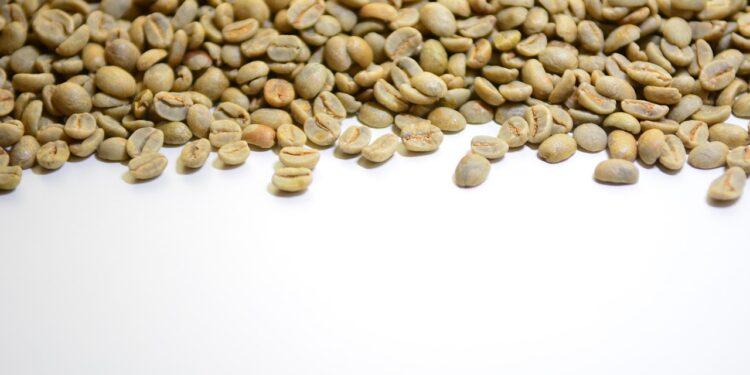The Global Journey of Coffee Beans: An Exploration from Seed to Cup
Coffee, one of the world’s most beloved beverages, begins its life as a cherry-like fruit on a small shrub. This seemingly simple drink unfolds an intricate narrative spanning multiple continents and involving a plethora of processes before arriving in your cup each morning. In this article, we’ll embark on a journey to discover the global path of coffee beans—from their origins in the fields to the final brew—shedding light on how this global industry affects economies, cultures, and environments worldwide.
Origin Stories: Discovering the Birthplaces of Coffee
Although coffee cultivation has now spread globally, its roots trace back to Ethiopia and Yemen. These regions, with their rich soil and ideal climatic conditions, provide the perfect environment for growing the Arabica coffee plant, the source of most specialty coffee today. The journey of coffee beans begins in these lush landscapes where they are carefully nurtured and harvested.
Key Varieties of Coffee Beans
There are two primary types of coffee beans: Arabica and Robusta. Arabica beans are highly cherished for their aromatic complexity and smoother flavor profiles, making them favorites in the specialty coffee market. On the other hand, Robusta beans are more robust and yield a stronger, more bitter brew, often used in espresso blends for added body and crema.
Cultivation and Harvesting Processes
The cultivation of coffee is labor-intensive and requires precise environmental conditions, such as altitude, temperature, and rainfall. Coffee plants generally take three to four years to produce fruit, commonly known as coffee cherries. Harvesting these cherries is often done by hand, particularly in mountainous regions, to ensure the finest quality and to protect the integrity of the beans.
Sustainable Coffee Farming
In recent years, sustainability in coffee farming has gained significant attention. Practices such as shade-grown coffee not only produce higher quality beans but also support local ecosystems. These methods reduce deforestation, maintain soil health, and protect biodiversity by allowing wildlife to thrive in coffee-producing areas.
From Local Farms to Global Markets
After harvesting, coffee beans undergo a series of processing steps including drying, milling, and often fermenting. This can be done through various methods like washed (wet), natural (dry), or honey processes, each imparting different flavors and textures to the beans.
Once processed, the beans are typically sold and shipped globally. Major coffee importing countries include the United States, Germany, and Japan, while Brazil, Vietnam, and Colombia are some of the largest exporters.
The Role of Fair Trade in Coffee Production
As the global demand for coffee grows, so does the importance of fair trade practices. Fair trade aims to give coffee farmers fair compensation for their labor and investment, promoting more sustainable living conditions and farming practices. By purchasing fair trade coffee, consumers can support the industry’s more ethical and socially responsible approaches.
The Art of Coffee Roasting and Grinding
Upon reaching their destinations, green coffee beans undergo roasting, turning them into the aromatic brown beans we’re more familiar with. Roasting is a crucial phase where timing and temperature are meticulously controlled to enhance the coffee’s flavor profile.
The Impact of Grinding
Grinding is the next step in coffee’s journey to your cup. The size and consistency of the grind affect the brewing process and the final taste of the coffee. Finer grounds are typically used for methods like espresso, where water contacts the coffee briefly, while coarser grounds are suited for French press or cold brew.
Brewing Cultures and Innovations
Every region of the world enjoys coffee in unique ways. From the espresso of Italy to the café au lait of France, or the traditional Ethiopian coffee ceremonies, each culture adds its twist to coffee consumption.
Modern Innovations in Coffee Technology
Technology also plays a significant role in how coffee is brewed and enjoyed today. Innovations such as programmable coffee machines, smartphone-connected espresso makers, and sustainable brewing technologies continue to transform the coffee landscape, making it easier and more eco-friendly to enjoy a perfect cup.
Concluding the Coffee Journey
The global journey of coffee beans is a complex tapestry woven with the threads of agriculture, economy, culture, and technology. Each bean’s voyage from a remote farm to a coffee lover’s cup encapsulates a story of tradition, innovation, and passion. As we sip our morning brew, we partake in this global phenomenon, sharing a silent connection with millions across the globe, united by our love for this magical beverage.
In exploring the journey of coffee beans, we not only gain appreciation for our daily cup but also understand the significant impact we can have as consumers on global economies, environments, and communities. From choosing sustainably sourced beans to supporting fair trade products, our choices contribute to shaping the global coffee culture, reassuring that each cup we enjoy carries value beyond its taste.





